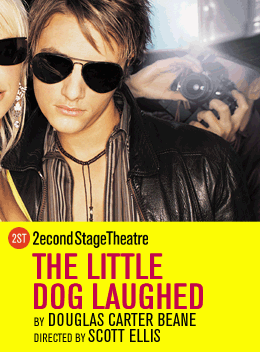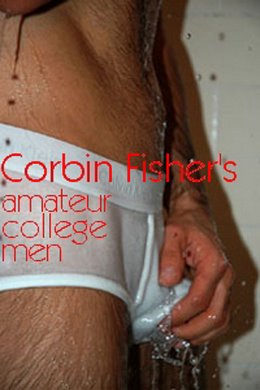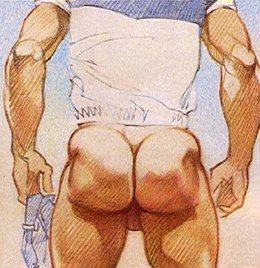Behind the scenes at the Guthrie
Behind the scenes at the Guthrie
The new Guthrie complex promises not only stunning theatrical playing spaces, but backstage places marked by their efficiency, size and general ergonomic improvement. This is where stage magic is made.
Graydon Royce, Star Tribune
Frank Butler, the Guthrie's production manager, was walking through the new theater's public lobby recently and came up to a large wall of dark-blue glass. If you squint, you can see through the glass and make out the large skyway where sets are rolled up to the backs of the thrust and proscenium stages.
"I wish this was a little darker," Butler said. "I don't want the audience thinking about how the magic is done."
The public spaces and theaters are what most of us will see at the new building, but backstage, the transformation is arguably more profound. This is where the illusions are created, and the Guthrie offers a marked contrast from its previous digs on Vineland Place.
Costumers accustomed to working on several different levels including the basement are collected in a bright, airy room. Set construction actually happens on site, in a space that looks big enough to hold a Roman Coliseum. There's a kitchen where food is prepared for on-stage use, a state-of-the-art sound system and an expanded prop shop.
Butler walked through the building the other day and showed us some of the places we rarely get to see.
Standing on the thrust stage, he pointed to a maze of overhead catwalks, where lighting designers work to shade mood and drama. The old Guthrie was built for 200 lighting units in 1963. This space has capacity for double that number. Walking over to the first row, he pointed below the seats at small heating and cooling vents. This new system, he said, should be far quieter than the old ceiling blowers and compete less with the voices of actors.
Below the stage, Butler pointed up and noted that the stage floor can accommodate a trap door at any spot (remember Marley's Ghost arising in "A Christmas Carol"?). All the aluminum I-beams and framing are constructed so they can be removed.
Huge space for building sets
The scene shop might be the crown jewel in Butler's empire. It has 24-foot ceilings and one section entirely for painting. (If the theater needs money, it might consider auto-body work). This huge space is 30 percent larger than the old shop -- which was across town from the theater -- and raw materials can be shipped in through a 10-by-24-foot freight elevator. The Guthrie had to get a variance from the city to build the large skyway across 2nd Street and for the air rights above the municipal parking ramp.
The costume shop has a wall of windows looking out on what will be a 7-acre park. "It's great to have windows for the staff," said Butler. "We didn't see the light of day for many years."
Here, on large draping tables, costumers cut and sew and tailor all the elegant fashions, the smart uniforms, beggars' rags, period dress, armor and robes. The real beauty of this new building is that everything is in one place. It used to be that the costume shop and the fitting rooms were on different floors. Here, the fitting room is right next door, and the costumes are kept in a wardrobe when they're finished.
Nearby are the wig shops, where those glorious stands of hair are built. There are two dye rooms where, Butler said, an enormous amount of electrical energy is spent on vats, plumbing, two kinds of lights (one to approximate stage lighting so colors look true) and special ventilation for dry pigment. One dye room is just for costumes, another for large fabrics.
The craft shop is an interesting collection of boxes and plastic tubs, each labeled to a humorous level of specificity: "belt buckles, western,"belt buckles, military,"feathers, military,"feathers, turkey,"feathers, black." These pieces are stacked floor-to-ceiling and meticulously catalogued.
In the prop shop, furniture, hand props and set decorations are designed and created. The Guthrie does not haunt rummage sales or secondhand stores for pieces that might fit. They're made fresh or recycled from a previous production. For example, Butler pointed out a chandelier that was used in "Hamlet," sitting in the prop shop and awaiting a slight retooling so it can adorn the set of "The Great Gatsby." The work can be as small-scale as a jewelry box or as large-scale as the full-size 1925 Rolls Royce that is being made for "Gatsby."
In another room, soft goods are made, such as pillow cases, curtains and other props made from fabrics.
The magic factory extends not only to the nuts and bolts, but to people places, too. For example, Butler walked us through three rehearsal rooms, one for each of the upstairs stages. All three have mirrored walls and are wired for sound.
Lastly, the new building has its own recording studio, where atmospheric musicscapes, voice-overs and sound effects can be tailored specifically for productions.
When it all works, an audience shouldn't even be aware of it. That's what makes it magic.
Graydon Royce • 612-673-7299
©2006 Star Tribune. All rights reserved.
The new Guthrie complex promises not only stunning theatrical playing spaces, but backstage places marked by their efficiency, size and general ergonomic improvement. This is where stage magic is made.
Graydon Royce, Star Tribune
Frank Butler, the Guthrie's production manager, was walking through the new theater's public lobby recently and came up to a large wall of dark-blue glass. If you squint, you can see through the glass and make out the large skyway where sets are rolled up to the backs of the thrust and proscenium stages.
"I wish this was a little darker," Butler said. "I don't want the audience thinking about how the magic is done."
The public spaces and theaters are what most of us will see at the new building, but backstage, the transformation is arguably more profound. This is where the illusions are created, and the Guthrie offers a marked contrast from its previous digs on Vineland Place.
Costumers accustomed to working on several different levels including the basement are collected in a bright, airy room. Set construction actually happens on site, in a space that looks big enough to hold a Roman Coliseum. There's a kitchen where food is prepared for on-stage use, a state-of-the-art sound system and an expanded prop shop.
Butler walked through the building the other day and showed us some of the places we rarely get to see.
Standing on the thrust stage, he pointed to a maze of overhead catwalks, where lighting designers work to shade mood and drama. The old Guthrie was built for 200 lighting units in 1963. This space has capacity for double that number. Walking over to the first row, he pointed below the seats at small heating and cooling vents. This new system, he said, should be far quieter than the old ceiling blowers and compete less with the voices of actors.
Below the stage, Butler pointed up and noted that the stage floor can accommodate a trap door at any spot (remember Marley's Ghost arising in "A Christmas Carol"?). All the aluminum I-beams and framing are constructed so they can be removed.
Huge space for building sets
The scene shop might be the crown jewel in Butler's empire. It has 24-foot ceilings and one section entirely for painting. (If the theater needs money, it might consider auto-body work). This huge space is 30 percent larger than the old shop -- which was across town from the theater -- and raw materials can be shipped in through a 10-by-24-foot freight elevator. The Guthrie had to get a variance from the city to build the large skyway across 2nd Street and for the air rights above the municipal parking ramp.
The costume shop has a wall of windows looking out on what will be a 7-acre park. "It's great to have windows for the staff," said Butler. "We didn't see the light of day for many years."
Here, on large draping tables, costumers cut and sew and tailor all the elegant fashions, the smart uniforms, beggars' rags, period dress, armor and robes. The real beauty of this new building is that everything is in one place. It used to be that the costume shop and the fitting rooms were on different floors. Here, the fitting room is right next door, and the costumes are kept in a wardrobe when they're finished.
Nearby are the wig shops, where those glorious stands of hair are built. There are two dye rooms where, Butler said, an enormous amount of electrical energy is spent on vats, plumbing, two kinds of lights (one to approximate stage lighting so colors look true) and special ventilation for dry pigment. One dye room is just for costumes, another for large fabrics.
The craft shop is an interesting collection of boxes and plastic tubs, each labeled to a humorous level of specificity: "belt buckles, western,"belt buckles, military,"feathers, military,"feathers, turkey,"feathers, black." These pieces are stacked floor-to-ceiling and meticulously catalogued.
In the prop shop, furniture, hand props and set decorations are designed and created. The Guthrie does not haunt rummage sales or secondhand stores for pieces that might fit. They're made fresh or recycled from a previous production. For example, Butler pointed out a chandelier that was used in "Hamlet," sitting in the prop shop and awaiting a slight retooling so it can adorn the set of "The Great Gatsby." The work can be as small-scale as a jewelry box or as large-scale as the full-size 1925 Rolls Royce that is being made for "Gatsby."
In another room, soft goods are made, such as pillow cases, curtains and other props made from fabrics.
The magic factory extends not only to the nuts and bolts, but to people places, too. For example, Butler walked us through three rehearsal rooms, one for each of the upstairs stages. All three have mirrored walls and are wired for sound.
Lastly, the new building has its own recording studio, where atmospheric musicscapes, voice-overs and sound effects can be tailored specifically for productions.
When it all works, an audience shouldn't even be aware of it. That's what makes it magic.
Graydon Royce • 612-673-7299
©2006 Star Tribune. All rights reserved.










0 Comments:
Post a Comment
<< Home